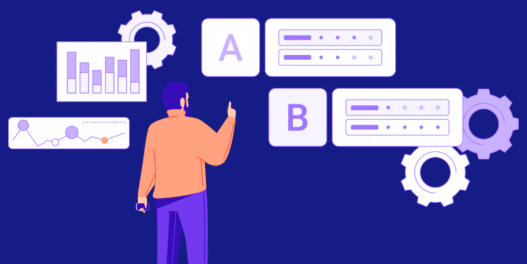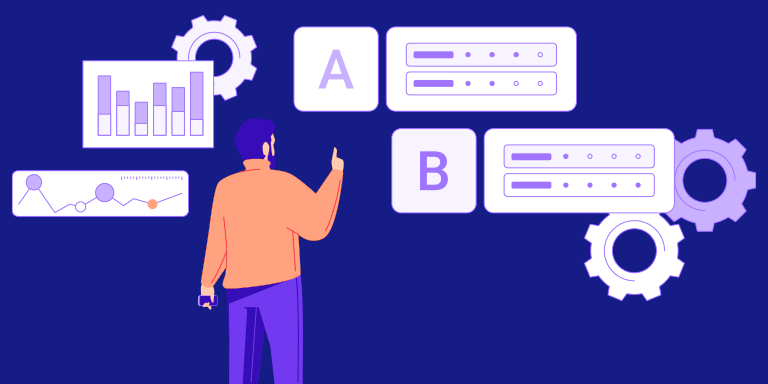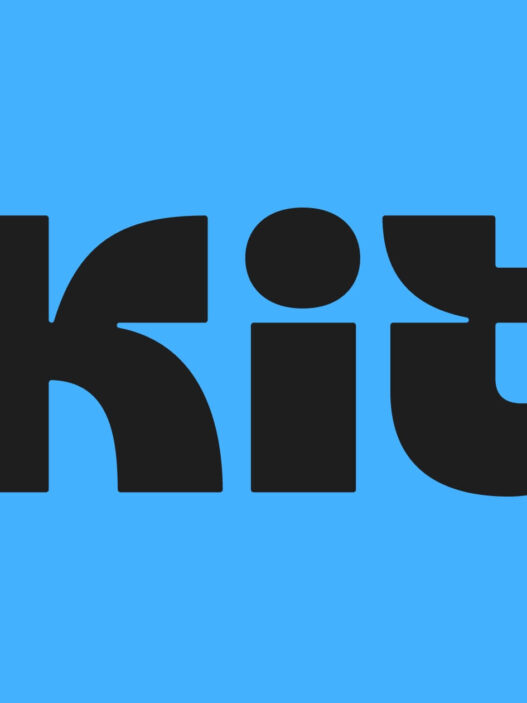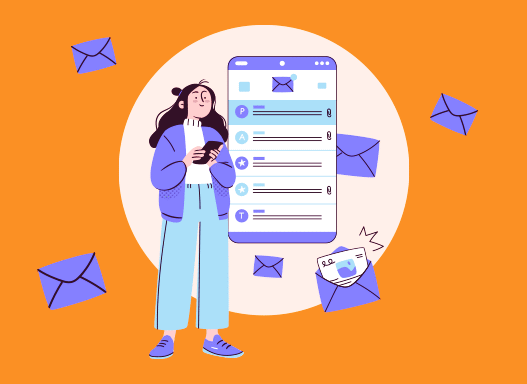There's a common yet very important saying in digital marketing.
What worked yesterday won't always work tomorrow.
Attention spans shift, inboxes get noisier, and what you think is a great subject line means nothing if your audience doesn't agree. That's why A/B testing isn't just a “nice to have”, it's a non-negotiable.
Smart entrepreneurs don't rely on hunches. They test everything: subject lines, CTAs, send times, even who the email appears to come from.
Why? Because small wins compound. A 5% lift in open rates here, a 10% bump in clicks there, suddenly your same email list is generating 30% more revenue, without spending a dollar more on growth.
In this article, I'll break down why you should always have at least one test running, the high-impact elements worth experimenting with, and how to do it without burning time or getting lost in the data.
Whether you're scaling your ecommerce brand or optimizing a lean SaaS funnel, these tactics will help you get more out of your existing audience.
Short on time? Here are the key takeaways
- A/B testing is non-negotiable if you want to increase opens, clicks, and conversions without growing your list.
- Always test high-impact elements like subject lines, CTAs, send times, and sender names. Small tweaks can lead to big results.
- Only test one variable at a time so you know what's actually driving performance.
- The right platform makes it easy. Omnisend helps you automate, segment, and A/B test faster, with no clunky tech stack.
Why A/B Testing Isn't Optional Anymore
Most founders obsess over growth, but often the real opportunity is right in front of them: conversion optimization.
If you've built even a small email list, A/B testing is how you unlock consistent gains, without growing your list or budget.
The stats behind email optimization
Omnisend's recent analysis of billions of emails shows average open rates rose from 22.9% in 2022 to 25.1% in 2023 among its merchants, and click rates rose from 1.2% to 1.5%, all driven by better testing and segmentation.
Automated emails delivered even stronger results. They had 52% higher open rates, 332% higher click rates, and a staggering 2,361% better conversion rate than regular campaigns.
That means triggered flows like welcome messages and abandoned cart emails are massively more efficient at turning opens into sales, but only when they have been optimized through AB testing.
When small lifts compound
Even a 5% uplift in opens or a 10% boost in clicks doesn't sound revolutionary, until it rolls through your entire funnel. Omnisend customers testing abandoned cart flows reported extra monthly sales gains of around $5,000, with small but consistent increases in open and click rates over just a few months of testing.
Better subject lines, smarter CTA copy, optimized timing, every improvement multiplies.
Real readers outpace assumptions
A staggering 43% of people decide to open an email solely based on the subject line. And poor copy? About 69% of users mark an email as junk based on subject alone, impacting both engagement and future deliverability.
Omnisend also confirms personalized subject lines boost open rates by up to 26%, especially when paired with segmentation and automation.
What You Should Be Testing
A/B testing isn't just about finding “better” subject lines or button colors, it's about deeply understanding your audience so you can serve them the right message, at the right time, in the right way.
Here are the high-leverage elements every founder should be testing regularly:
Subject Lines
Goal: Improve open rates
Why it matters: If your email doesn't get opened, nothing inside it matters.
What to test:
- Curiosity vs. Clarity (“You won't believe this…” vs. “Your 15% discount ends today”)
- Personalization (first name, location, or purchase behavior)
- Emojis vs. plain text
- Urgency and scarcity language
CTAs (Call-to-Action)
Goal: Increase click-throughs
Why it matters: This is where opens become actions, like clicks, purchases, signups.
What to test:
- Button copy: “Shop Now” vs “Claim Your Offer”
- Button vs. hyperlinked text
- CTA placement: top, middle, or bottom
- Number of CTAs per email (single vs. multiple offers)
Send Time and Frequency
Goal: Maximize visibility and engagement
Why it matters: Even the best content gets ignored if sent at the wrong time.
What to test:
- Weekdays vs. weekends
- Early morning vs. afternoon vs. evening
- Time zone segmentation
- Frequency: daily, weekly, biweekly
Sender Name & Preheader Text
Goal: Boost trust and curiosity
Why it matters: The “from” field and preheader often influence opens more than the subject line.
What to test:
- Sender name: brand vs. personal (“Acme” vs. “Sarah from Acme”)
- Preheader style: benefit-driven, curiosity-based, or instructional
- Pairings: How subject + preheader work together
Audience Segments
Goal: Boost relevance and conversions
Why it matters: Blanket emails don't convert. Micro-targeted ones do.
What to test:
- First-time customers vs. loyal customers
- High spenders vs. inactive users
- Product category affinity (e.g. men's vs. women's items)
- Cart abandoners vs. browsers
Why There Should Always Be One Test Running
Testing isn't a one-off tactic; it's a system. The best-performing brands don't just test when they're stuck; they make testing part of their everyday process. Here's why that mindset matters, and how to bake it into your workflow.
Your audience is always changing
People don't open, click, or buy the same way forever. Preferences shift based on seasonality, inbox fatigue, competitive offers, and even economic conditions. What crushed it last month might fall flat today. A/B testing helps you stay in sync with your audience.
Example: A subject line that wins in July (“Stay cool with this 1-day offer”) might flop in October when priorities have shifted. Testing gives you real-time insight into what's actually resonating.
Test small, win big
Testing doesn't require huge budgets or dev-heavy funnels. You can get statistically relevant results with:
- An email list as small as 1,000, using a 50/50 split
- Testing just one variable (e.g. subject line) per send
- Running the test until at least 25–30% of your total list has engaged
Small tweaks lead to big outcomes.
Testing builds intelligence, not just results
Every test gives you data you can reuse across emails, ads, landing pages, and beyond.
Learning that “curiosity-based subject lines” outperform benefit-driven ones for your audience? That applies everywhere. This is how small brands move fast and punch above their weight.
How to Run a Smart A/B Test Without Wasting Time
A/B testing only works if it's set up right. Otherwise, you're just comparing guesses. Here's a simple, repeatable framework to follow every time:
1. Start with a hypothesis
Don't test randomly. Know what you're trying to learn.
Bad: “Let's try a red button.”
Good: “We believe a benefit-driven CTA (‘Get My Discount') will increase clicks by 10% over a generic one (‘Learn More').”
2. Test one variable at a time
To know what caused the result, isolate a single change:
✔ Subject line
✔ CTA copy
✔ Send time
✘ Subject line, CTA, and design (you won't know what moved the needle)
3. Pick the right metric
Your test goal should match what you're changing:
- Testing subject line? → Measure open rate
- Testing CTA? → Measure click-through rate
- Testing landing page copy? → Measure conversion rate
4. Send to a big enough sample
Avoid false positives. Most platforms (like Omnisend) recommend testing with at least 1,000 recipients per version to get meaningful results.
If your list is small, consider a 20/20/60 split:
20% see Version A, 20% see Version B, and the winning version goes to the remaining 60%.
5. Document and apply learnings
What worked? What didn't? Why?
Track every test and result. Over time, this becomes your competitive advantage, a private library of what your audience actually responds to.
Final Word
You don't need to overhaul your entire marketing strategy to get better results. You just need to test one thing consistently, and with intention.
Whether it's your subject line, CTA, or timing, each small experiment brings you closer to what actually works for your audience.
That's where Omnisend makes a difference. Built for ecommerce brands that move fast, it lets you automate smarter flows, segment with ease, and optimize every send, without juggling multiple tools or workflows.
Foundr readers get 50% off their first 3 months with code FOUNDR50.
Start testing smarter. Start converting more. Claim your discount now.



















